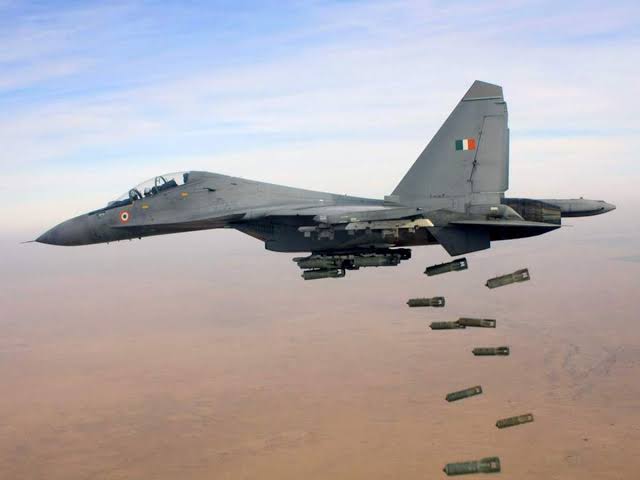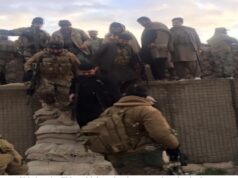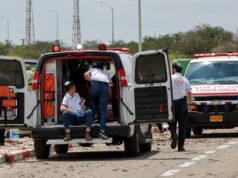IAF Airlift Capabilities for a Two Front War

By
Colonel Awadhesh Kumar
Recently the Indian airborne forces demonstrated their drills in eastern Ladakh to validate their rapid response capabilities in high altitudes. It was also a clear signal to the PLA for things to expect in case they invite trouble. The exercise included inter-theatre movement of airborne forces with heavy equipment for drop, precision stand-off drops, rapid grouping and the ability to capture designated targets with speed and surprise.
Though the military standoff with China is being resolved through dialogue and negotiation, Indian Army has no options but to keep large-scale deployment of combat formations on the Himalayan LAC to counter any ‘misadventure’ by the PLA forces. This is the second consecutive winter of massive military deployment of thousands of troops in the High Altitude areas of Ladhak.
To ensure swift switching of men and material along the entire Himalayan length from Ladhak right through to end of Arunachal, we need a robust airlift capability. In light of this, a joint airlift exercise, OP HERCULES, was undertaken by the Indian Air Force and Indian Army The aircrafts utilised for the airlift were C-17, IL-76 and An-32 aircraft, which took off from he forward bases of the Western Air Command.
The airlift gave a demonstration of the inherent heavy-lift capability of the Indian Air Force, which has to play a major role in ensuring the ability to quickly respond to any contingency anywhere. This airlift was in addition to the Winter Stocking already completed by road by Northern Command well in time.
Indian Army’s Northern Command in general and its XIV Corps based at Leh in particular carries out the world’s largest winter stocking exercise annually as no other army deploys as many soldiers at such heights—which include Siachen glaciers. Now with additional 60,000 troops deployed close to LAC, this stocking has become an important factor.
Now what is required is to build up a robust airlift capability over a period of 10 to 15 years, for inter theatre movement of men and material.
We already have 11 x C17 heavy lift aircrafts. In case USA is really worried about China then they must be ready to release another 9x C17 aircrafts from their reserves as the manufacturers have already closed the production line. Then with a Squadron at Hindon and another one at Panagarh, we will be in quite a comfortable position.
Next, a quick futuristic decision needs to be taken for selection of an aircraft for indigenous AWACS, Aerial Refuelers and also additional heavy lifters with 50 ton load capacity to augment the C17s. A most suitable aircraft to be considered may be the IL76 MD 90 A.The cargo cabin of the aircraft is designed with a length of 24.5m (with ramp), width of 3.45m, and height of 3.4m. The cargo cabin offers an interior volume of 321m³.It can carry 126 parachutists or 145 troops in single deck arrangement and 225 troops in double-deck arrangement. It can also house special equipment to carry 114 Stretcher cases in Casualty evacuation role.
The aircraft carries an aerial-delivery system (ADS) for dropping of cargoes, transportation of cargo containers and pallets. The ADS installed onboard the IL-76MD-90A facilitates dropping of parachutists from an altitude of 8,000m at 220km/h to 400km/h speeds. It also enables equipment dropping with the help of parachutes from altitudes of 300m to 4,000m at 260km/h to 400km/h speeds.
The cargo dropping system aboard the aircraft ensures the dropping of platforms laden with shipments and equipment. The under-ladder devices, roller ways and winches in the cabin allow the loading of cargoes and equipment into the aircraft. The new engines consumes 12% lesser fuel and offers an increased flight range of 18%. The PS-90A-76 engine on board the aircraft is compliant with latest ICAO requirements for noise and emission levels. An auxiliary power unit (APU) TA-12A is also installed onboard the aircraft.
The transporter can cruise at a speed of 820-850km/h and can fly at a maximum altitude of 12,000m. The maximum range of the aircraft is 8,500km. The aircraft requires 1,700m take-off distance on concrete runway. The life expectancy of the IL-76MD-90A military transport aircraft is 30 years. The aircraft can accumulate a maximum of 30,000 flying hours throughout its service life.
The IAF in all probability requires at least 72 x IL76 MD90A to equip six squadrons including replacement of existing older IL76s. Additionally at least a minimum of 36 × IL76 will be required for the AWACS and Refuellers. So after negotiations India should go in for Make in India production of this aircraft.
For the medium airlift, CASA C295 which has already been selected to replace the vintage HS 748 Avros, can also become the most suitable replacement for the An 32s. In that case apart from the 56 aircrafts already approved, the Cabinet will have to approve another 108 aircrafts to equip 9x Squadrons.
For light lift, the SARAS MK2 Should be soon available and in time augment and replace the Dorniers.
DRDO should also start concentrating on designing a transport aircraft with load capacity of 20 tons. So that by mid 2030s we start manufacturing this aircraft. Meanwhile we may go in for another squadron of C130 Hercules for exclusive Special Forces requirement.
The planned Aviation Brigades integral to each of the Corps along with Mi26s, Chinooks and Mi17s of the IAF should look after the intra theatre requirements. Though for that may be another at least 15 Chinooks would make things comfortable.
Soon the HAL designed and made medium helicopters should also start augmenting the Mi17 fleet and then become a worthy replacement. Presently we have nearly 18 squadrons of these medium lift helicopters. To meet all needs, this strength should go up to 24 squadrons.
With the above airlift capabilities, the Indian theaterization process will be completed and become real effective.




